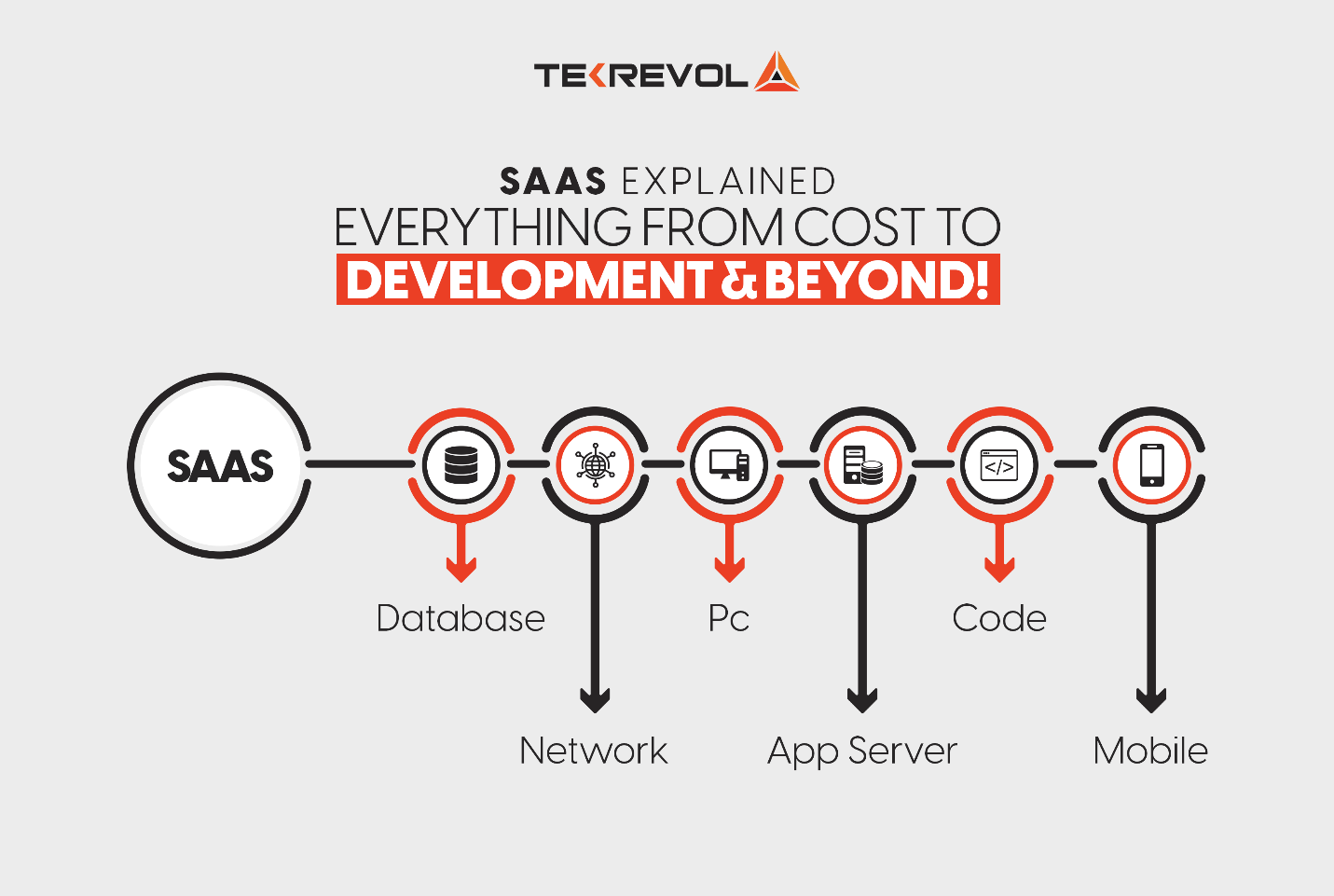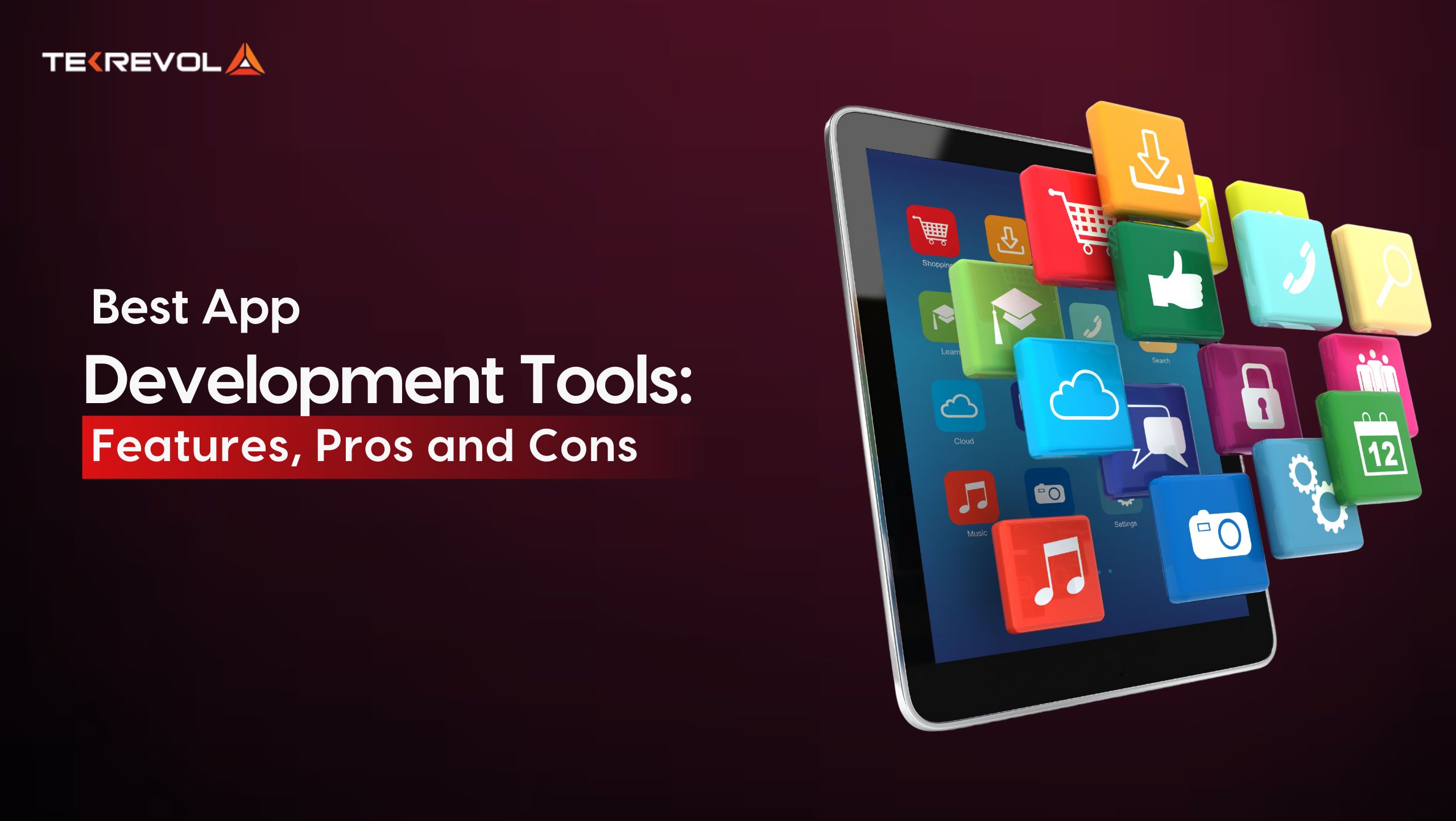The art of order management, where chaos meets spreadsheets and businesses strive to keep their inventory from playing a game of hide-and-seek – If you’ve ever found yourself drowning in a sea of misplaced orders, late deliveries, or inventory surprises then this guide is for you.
The good news? – The solution isn’t hiring a magician but building a custom order management software that can transform your operations from ground up! Whether you’re running a boutique e-commerce store or a global manufacturing empire – a custom order management software has your back.
From automating order management to help you track orders like a hawk to getting all of your hefty calculations in one single place, this guide covers everything you need to know about getting a custom order management solution.
Ready? Let’s dive in.
What Is Custom Order Management Software?
Custom order management software (order management software) is a tailored digital solution designed to handle the entire lifecycle of orders – from initial placement to final delivery. Unlike generic or off-the-shelf solutions, custom order management software is developed to cater to a business’s unique operational requirements.
Whether you’re a growing e-commerce brand or a logistics powerhouse, well-designed order management software can be your secret weapon for streamlining operations.
1. What Makes It “Custom”?
Custom order management software capabilities are designed according to your industry, customers, and workflows. It magically merges with tools such as custom ERP order management modules, e-commerce platforms, or CRM systems and provides business owners with flexibility that no ordinary solution can.
Some remarkable benefits of custom order management software for small businesses and big enterprises include –
- Personalized workflows – Streamline specific order processes for your business
- Scalability – The software grows along with your corporate needs.
- Added integrations – Integrates third-party applications, such as cloud-based order management systems.
2. Why Is It Important?
Let’s See What The Numbers Have To Say:
The SaaS order management software market is expected to reach $3.4 billion by 2026, as demand for seamless order processing and automation drives the market.
According to Forrester, the companies that adopt real-time order-tracking solutions observe enhanced customer retention by 78% within a year.
How It Works
A custom order management software acts as a centralized hub that handles the following functions seamlessly:
- Order Consolidation – Centralizes data from multiple channels (online, offline, marketplaces).
- Inventory Management – Tracks stock in real time to avoid overstocking or stockouts.
- Fulfillment Automation – Speeds up delivery through automation in order management workflows.
Benefits of Custom Order Management Software
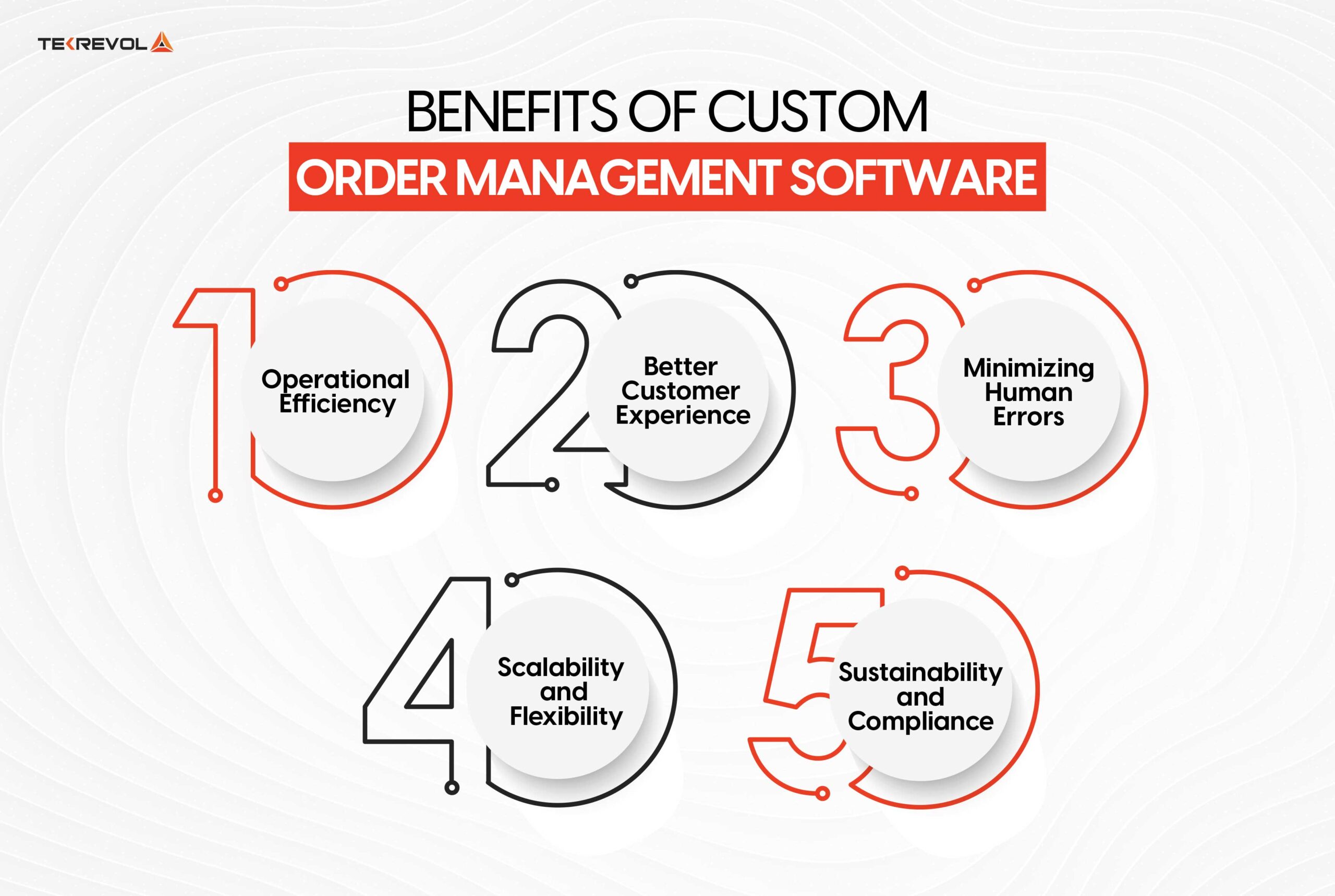
Wondering why so many businesses invest in custom order management software? Let’s break it down:
1. Operational Efficiency
Custom order management software automates order management in the business to streamline operations. From automated inventory updates to rerouting orders in case of a stockout, it eliminates the need for in-hand operations and increases productivity.
2. Better Customer Experience
Today’s customers want real-time order tracking solutions—anything less than that will cause them to shop elsewhere. Custom order management software ensures your customers can track orders, get faster deliveries, and enjoy a seamless experience across all channels.
3. Minimizing Human Errors
Manual key-in errors? Mistakes are bound to happen. With cloud-based order management software, human mistakes are replaced with accurate, automatic workflows – So, no more sending 500 units to a customer who ordered 50.
4. Scalability and Flexibility
As your company expands, so does your software. Whether you add more SaaS order management software features or scale to accommodate global operations, customization keeps you future-proof.
5. Sustainability and Compliance
Whether you want to track carbon footprints, optimize your packaging, or keep your orders according to regional laws – customized order management software has got your back!
Types of Custom Order Management Software
Let’s group custom order management software to make it easier for you to decide which is best for your business.
1. Industry-Type
- E-commerce – Omnichannel order tracking
- Manufacturing – Supply chain efficiency
- Retail – In-store and online inventory management
2. Deployment Type
- Cloud-based order management software – On-demand, scalable, with flexibility for remote teams
- On-premise systems – High security, higher upfront
3. Functionality-Type
- Basic order management software – For startups selling through just one sales channel.
- Advanced Systems – AI-powered, filled with predictive analytics for better decision-making.
Why Should You Develop Custom Order Management Software?
Don’t listen to us or any other custom software development company that’s promising you the moon and the stars. Review the stats provided below, do your research, and answer this question by yourself!
- Recent surveys claim that 67% of business respondents believe that poor order management is the root cause of having an unsatisfied customer experience and terrible business operations.
- Companies that deploy SaaS-based order management systems or bespoke solutions see a decline of 30% in time for order fulfillment
- Cloud-based order management software is growing at an annual rate of 16.5%, a testament to the shift toward flexible, scalable platforms.
Key Features to Include In Your Custom Order Management Software
A good custom order management software doesn’t just manage orders – it changes the course of your business.
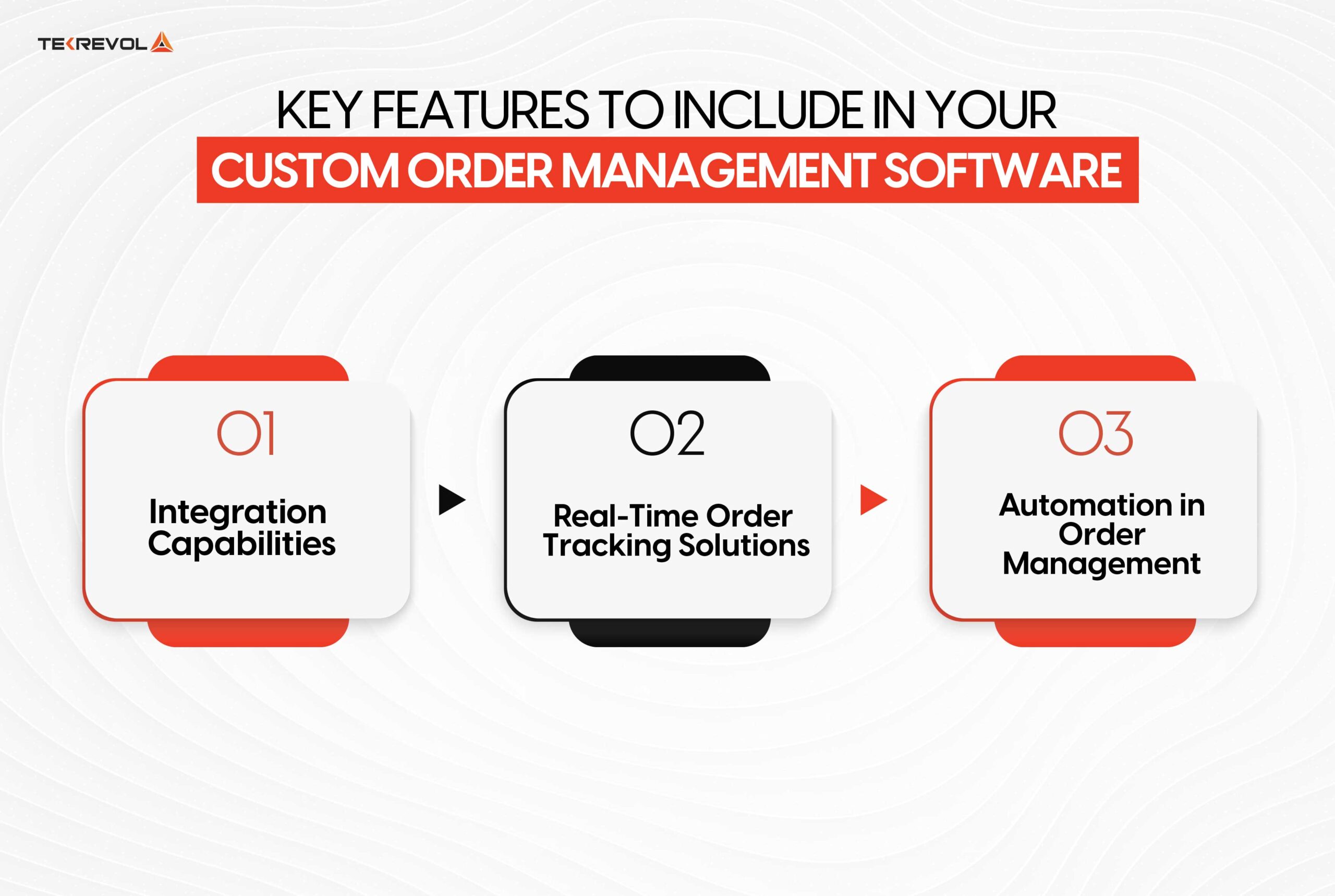
Get your business order management software with the right features and experience in how it drives efficiency, minimizes errors, and improves customer experience.
Here is a detailed list of features that every modern order management system should have:
1. Integration Capabilities
Your order management software must seamlessly integrate with existing systems, like custom modules of ERP order management, CRM software, and accounting tools. This ensures effective and smooth data flow and eliminates any kind of silos.
The integration also allows businesses to be synced with platforms like E-commerce marketplaces and logistics tools in a unified workflow.
Recent studies have shown that 75% of businesses report that system integration improves order fulfillment speed by at least 30%.
2. Real-Time Order Tracking Solutions
Today, customers demand transparency. Real-time tracking has become a necessity rather than an option. Whether it is a single item or bulk shipping, real-time order tracking solutions ensure customers are apprised and delivered accurately.
E-commerce giants like Amazon are setting higher standards, with 73% of customers now expecting detailed tracking updates for online purchases. This feature also helps managers identify bottlenecks in the supply chain, ensuring timely resolution.
3. Automation in Order Management
Automation is the backbone of modern order management softwares. Daily tasks such as order routing, inventory updates, and invoice generation are no longer manual chores.
By leveraging automation in order management, businesses can reduce errors and save up to 20 hours per week on repetitive tasks.
Core automation features:
- Auto-sorting orders by priority or region
- Triggering restock alerts on inventory thresholds
- Generation of real-time performance reports
Custom order management software vs. Ready-Made Solutions
Still, struggling to identify the basic differences between custom order management software and a ready-made solution?
Here’s a chart that will guide you through the difference!
| Factor | Ready-made order management software | Custom order management software |
| Cost | Cheaper initially, expensive long-term | Higher upfront, better ROI |
| Scalability | Limited | Designed for growth |
| Customization | Minimal | Full control over features |
| Integration | Restricted | Seamless with any software |
| User Experience | Generalized | Tailored to business needs |
Cost of Developing A Custom Order Management Software
A custom-developed order management software solution is a significant investment, but the payoffs you witness in terms of efficiency, scalability, and tailored functionality usually outweigh the costs.
Here’s a detailed breakdown to understand the cost behind the development of custom order management software:
Let’s Have A Look At The Development Costs
A number of factors drive the cost of building a custom order management software. Here’s a list of the factors that have a direct impact on your development costs:
- Scope of Features – Advanced features, such as real-time order tracking solutions, AI-powered analytics, or custom ERP order management module integrations, can add to the costs.
- Deployment Model – Selecting a cloud-based order management system may save initial investments but incur subscription fees for continued access. On-premise solutions come with high, one-time upfront investment costs.
- Development Team Location – Hiring an offshore custom software development company can reduce costs by 20–40% compared to local developers.
- Complexity of Integration – Systems requiring seamless links with e-commerce, logistics, or accounting platforms demand additional resources for API development.
Cost Ranges
Here’s a rough cost breakdown that can help you analyze the amount that you might need to pay for your custom order management software development.
| Small Businesses | Enterprise Solutions | Annual/Maintenance Cost |
| For those needing custom order management software for small businesses, a simple system can cost between $20,000–$50,000. | Large enterprise order management software with high customizations and automation in order management may cost between $100,000–$500,000 | Maintenance and Scaling costs around 10-15 % of the initial development price. This includes updates, scaling, and feature enhancements. |
How Can You Reduce The Development Cost?
- Feature Prioritization – Prioritize impactful features like solutions for real-time order tracking and workflow automation.
- Partner with the Right Firm – Work with a well-reputed bespoke software development firm to execute things well.
- Leverage Cloud-Based Systems – Savings on infrastructure expense and flexibility are two advantages to selecting cloud-based systems for orders.
Investment in custom order management software is not about price; it is about a system that will support a company with specific needs and help it achieve long-term success.
How to Choose the Right Order Management Software for Your Business?
You know about the cost, you know about the features – it’s about time that you should know how you can choose the right order management software for your business.
Though getting the perfect order management system for your business depends solely on factors such as business size, budget, and core functionality, this is not everything!
Here are some key steps that can help you choose the right order management software for your business.
1. Evaluate Business Needs
The evaluation process starts with understanding your business needs.
Small businesses may see a need for in-house order management software tailored to supply the main features – and discard the thought of spending some extra bucks for getting one and all solutions!
Similarly, more extensive enterprise organizations may want more professional packages that offer extra enterprise-level features.
Saying that, here’s what we really mean when we say “Evaluate your business needs”.
- Customization – Do you need specific, in-house-developed ERP order management modules to tailor the system to meet your unique business needs?
- Automation – Consider the amount of automation in order management, which you will need to process and eliminate time-consuming manual work.
2. Budgeting Plan
The system cost needs to be balanced with long-term benefits. Some order management software solutions are offered on a SaaS basis, that means subscription-based and lower cost when compared to a lump sum upfront investment.
However, other order management software solutions may require a higher initial investment for on-premises software. So while preparing the budget for the development, consider paying attention to the following factors:
- Subscription vs. One-time Costs – How does the pricing structure align with your financial situation?
- ROI Consideration – Will the system save enough time and resources to justify its cost?
3. Evaluate Integration and Functionality
Ensure your selected order management software can integrate magically with third-party systems, especially cloud-based order management systems, without a hitch and causing any problems in data flow across platforms.
Look for solutions that offer real-time order tracking, which will enable you to provide customers with up-to-date information on their orders.
- Real-Time Tracking – How well does the system track orders from start to finish?
- Integration – Can it work with your current tools or future platforms?
4. Scalability and Support
A scalable order management system should grow with your business. A cloud-based order management system should offer flexibility in growing without requiring a big, up-front infrastructure investment.
A study by Forrester revealed that 80% of companies using SaaS order management software reported improvements in order fulfillment speed and accuracy. (Source)
Make sure the system provides ongoing support and updates to adapt to changing business needs.
- Not Sure What Will Be The Best Order Management Software For Your Business?
- Seek tailored insights directly from the experts
Step-by-Step Guide to Building a Custom Order Management Software
What is the one step businesses can take to enhance their operations and create better customer experiences? It is developing custom order management software.
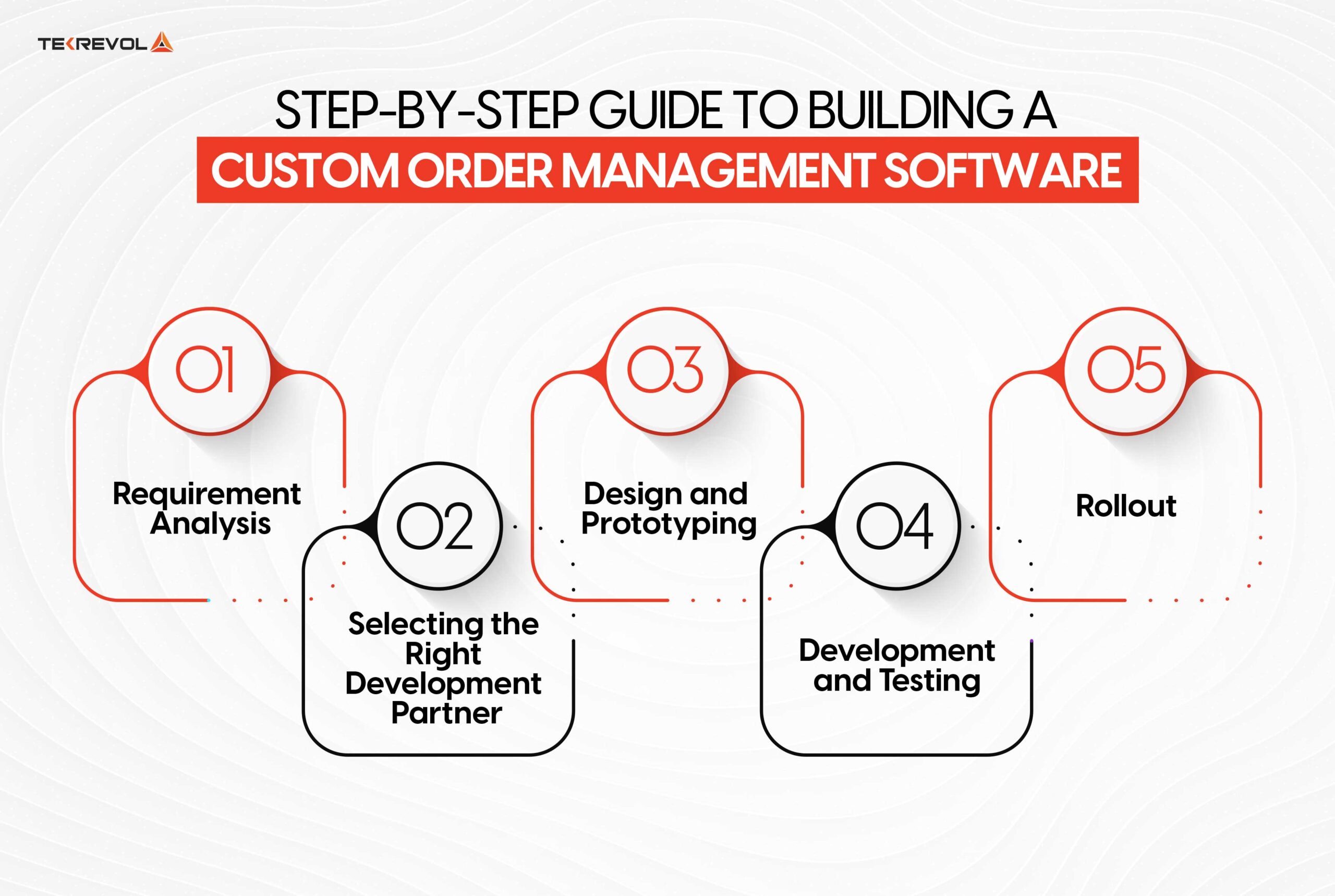
Here is a step-by-step guide that can help you build strong order management software that effectively caters to your business needs.
1. Requirement Analysis
- Identify Key Objectives – Start by understanding what you want to achieve with the order management software. Whether it’s automating workflows, improving real-time order tracking solutions, or integrating with existing tools, a clear set of goals is essential.
- Address Pain Points – Analyze your current processes to highlight inefficiencies. Businesses may struggle with manual order entries or processing delays.
- Must-Have Features – Outline features such as –
- SaaS order management software for scalability
- Custom ERP order management modules for integration with existing systems
- Real-time order tracking solutions for enhanced visibility
- Automation in order management to avoid human error
2. Selecting the Right Development Partner
The selection of the right development partner is critical to ensuring that the order management software you choose meets your unique needs.
Select a custom software development company that comes with proven expertise in delivering tailor-made solutions and provides skilled SaaS-based and cloud-based order management systems.
Also, ensure that the custom app development company you have chosen has what it takes to create custom order management software for small businesses – and has a demonstrated history of managing integrations with other business systems.
3. Design and Prototyping
- Workflow Visualization – Developing mock-ups of your order management software is essential to ensure that workflows are efficient and intuitive. This includes designing dashboards that manage real-time order updates, inventory, and customer service interfaces.
- Prototyping – Build prototypes to test user interactions and ensure that the design meets your business needs before investing in full-scale development.
4. Development and Testing
- Development – Ensure that a scalable architecture is applied to build the system, which will scale with your business’s growth. A cloud-based order management system is ideal for this flexibility.
- Security – Implement strict security measures to guard against sensitive customer and order data while handling payments and personal information.
- Testing – Thoroughly test the system under real-world conditions to ensure that it delivers the best performance, with a strong emphasis on scalability, speed, and security.
5. Rollout
- Training – Proper training is important to ensure your employees use the system effectively. For their assistance, you can combine hands-on training with tutorials.
- Post-Launch Monitoring – Actively monitor the system’s performance soon after launch. Fix bugs or inefficiencies and apply necessary upgrades for smooth operation.
Future Trends in Order Management Software
As businesses increasingly move to cloud-based order management systems, order management software platforms will evolve with greater emphasis on AI-powered insights, machine learning for demand forecasting, and enhanced automation.
According to recent reports, 63% of companies say they’ve seen improved efficiency after adopting SaaS-based order management systems. Automation in order management can reduce operational costs by 20-30%.
Through these steps, businesses can build a custom order management software that not only meets their current needs but also scales with growth, incorporating the latest technologies for greater efficiency and customer satisfaction.
How Tekrevol Can Help You Get The Best Custom Order Management Software
Tekrevol truly stands out as a leader in terms of developing business-specific, custom order management software that suits best with the unique needs of your business.
Their extensive portfolio speaks to significant experience they come with in developing scalable SaaS-based order management applications – and promises to reduce your order processing time up to 35%.
Whether you’re a startup seeking customized order management software for small businesses or a large enterprise that looks for advanced cloud-based order management systems, Tekrevol’s expert team is here to help!
Partner with Tekrevol today and take your order management business to a whole new level!

 516 Views
516 Views March 24, 2024
March 24, 2024


